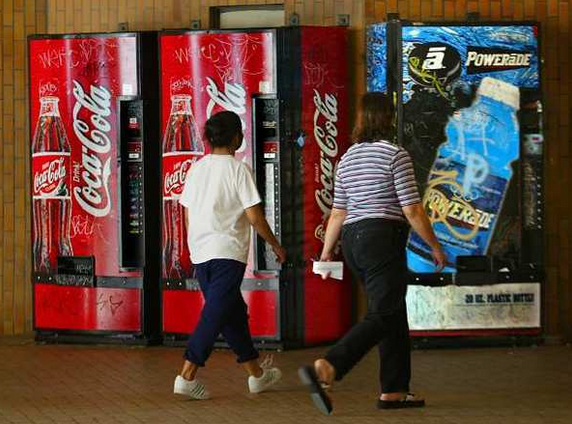
All throughout primary school and high school, I loved sugary drinks. Seriously, I could guzzle down tons of soda if it was available. Luckily, I grew up in an era right before corporations were able to push their products directly to me in elementary and middle school, or I might had been one of the 35% of black children who are overweight or obese.
After stricter government guidelines for child nutrition, today the fight is over how to keep the sugar pushers, primarily Coca-Cola and Pepsi, out of children’s hands off campus. In a recent study, high school and middle schools have limited ways to obtain soda on campus, but access to sugary drinks, in the form of high performance sports drinks and fruit juices, is a prevalent as ever surrounding schools.
It’s kind of like going to school across the street from the dope house, but in this case, the crack is legal.
According to The Los Angeles Times, students access on school grounds to sugary soft drink fell over 50%, these numbers according to the study, which was published Monday in the Archives of Pediatric and Adolescent Medicine, and was funded by Bridging the Gap, a research program of the Robert Wood Johnson Foundation.
The study also found that 83% of high school students still had access on school grounds to sports drinks — down insignificantly from 90% in 2006-07. For middle schoolers, the decline in access to sports drinks was more pronounced: while 72% could buy such drinks in school in 2006-07, only 55% could do so in 2010-11.
Most of these numbers tell me that kids are not turning away from sugar but, tragically, are learning how to work around restrictions and conceal their addiction. As the US Department of Agriculture continues to demonize the soft drink industry, and as we as a culture continue to stigmatize fatness, kids are learning, much like adults in the 1980s when crack ruled, methods of hiding a monkey that’s riding hard on their tiny backs.
But, again, sugar is legal and drugs aren’t, so I can’t imagine what children’s minds are processing when they see Dwight Howard’s superhero physique endorsing Powerade and then when they go to school, their administrators are telling them its bad.
I used to hide my candy under my bed after I learned that it was bad for my teeth, yet I knew I couldn’t give my Sugar Babies up, so I hid them.
To its credit, the Obama Administration, under the Healthy Hunger-Free Kids Act of 2010, will go back and rewrite legislation that governs school nutrition guidelines to include sugary milks and sports drinks.



